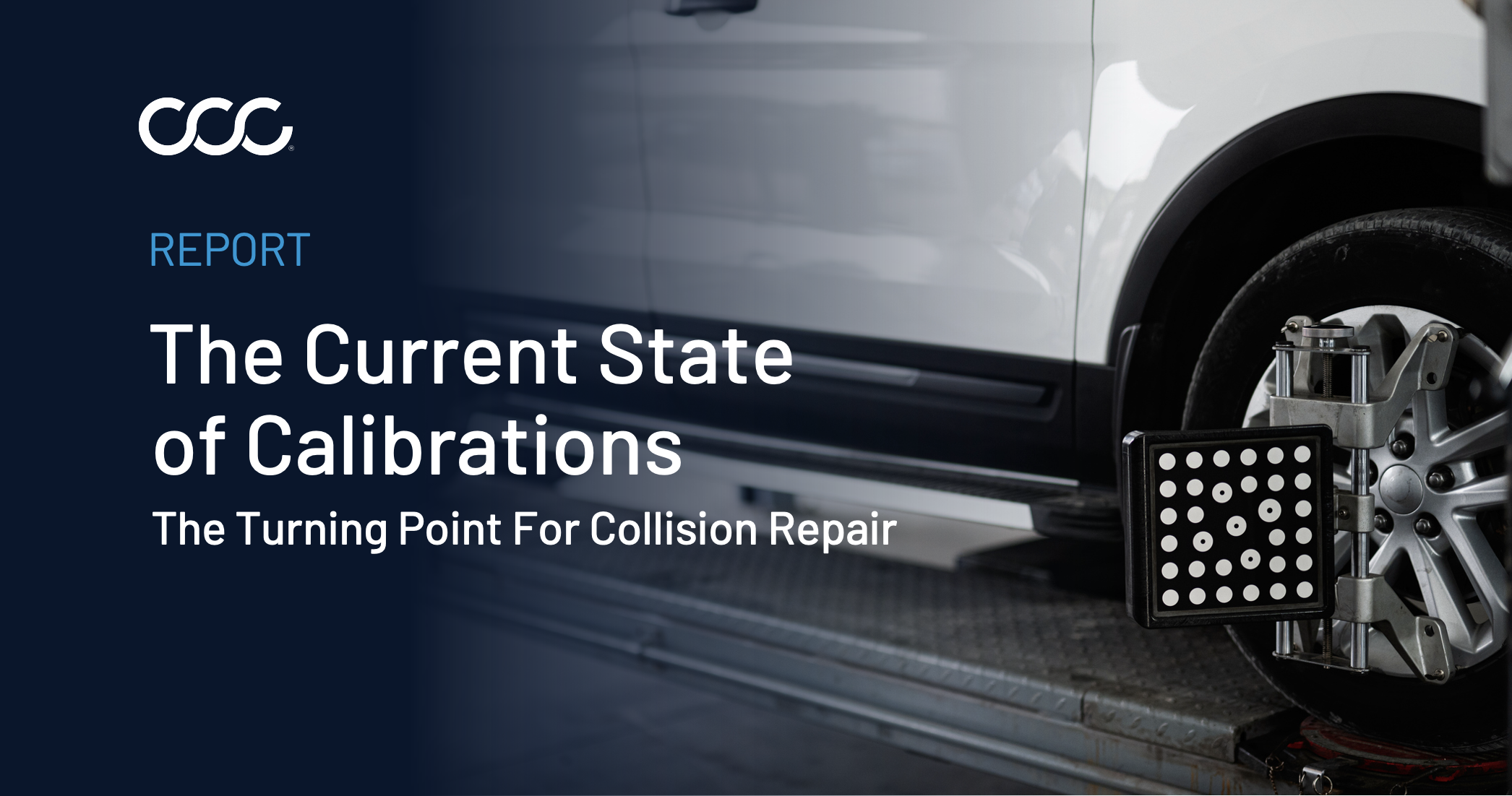Collaborative Solutions for a Changing Threat Landscape
Auto insurance fraud continues to evolve, and it's costing both the industry and consumers in a big way. A study by the Coalition Against Insurance Fraud (CAIF) estimates that insurance fraud costs U.S. consumers $308.6 billion annually, with roughly $7.4 billion coming directly from auto insurance fraud.
These schemes are no longer limited to exaggerated injuries or staged fender benders – they’re bad actors filing near-identical claims across multiple carriers, recycling photos, documents, and injury narratives to avoid detection.
While each scheme may look slightly different, the outcome is the same: higher claim costs for insurers and higher premiums for policyholders nationwide.
Because when fraud goes undetected, everyone pays the price. Customers face rising costs and delays, while the reputation of the industry suffers. Combating auto insurance fraud isn’t just about catching criminals – it’s about protecting the integrity and affordability of insurance for everyone.
It’s Not Carrier vs. Carrier – It’s Insurers vs. Fraud
Traditionally, insurance carriers have treated claims data as proprietary, seeing it as a competitive asset. However, that can create information silos that fraudsters are quick to exploit. Selective data sharing does not compromise competitive advantage – rather, it strengthens the industry's collective ability to detect and prevent fraud. When carriers operate independently, visibility gaps emerge, allowing repeat offenders and organized crime rings to move undetected from one company to another.
In effect, this lack of coordination makes fraud a shared problem for the entire industry.
Auto carriers risk missing connections between claims, identities, and suspicious third parties that span multiple insurers, regions, and policy types. These patterns are often invisible until data is pooled and analyzed collectively.
When auto insurers work together, they dramatically increase their ability to detect and prevent fraud. By sharing select claims data and investigative insights, carriers can spot trends and uncover schemes that would otherwise remain hidden.
Here are the top three ways carrier collaboration can address auto insurance fraud:
- Uncovering Complex Fraud Networks: Shared data exposes intricate links between claims, revealing organized fraud rings that span geographies, identities, and timeframes. For example, carriers may discover recurring claimants using multiple identities, or spot suspicious third parties involved in staged accidents across several insurers.
- Identifying Repeat Fraudsters: When carriers pool insights, they can detect individuals who file suspicious claims with multiple carriers. This enables earlier intervention, preventing payouts before losses occur and deterring would-be offenders from targeting the system.
- Reducing Friction for Legitimate Policyholders: Having access to broader context helps insurers distinguish genuine claims from fraudulent ones, reducing false positives and speeding up the investigation process. This means customers experience faster resolutions and less disruption.
Real-World Impact
Cross-carrier data sharing has the potential to expose multi-state fraud rings, to recover millions in fraudulent payouts, and to dismantle networks specializing in staged accidents and identity theft.
In a recent case highlighted by the NICB, 29 individuals were arrested in California as part of Operation Family Ties, a multi-agency investigation into organized auto insurance fraud. The ring filed 18 fraudulent claims over two years, targeting 11 insurers and collecting over $235,000 before the scheme was uncovered. Investigators helped prevent an additional $250,000 in losses. The suspects staged collisions and submitted false injury and damage claims, underscoring the need for stronger cross-carrier collaboration to close gaps in data visibility.
The lesson here is that no single carrier can catch every scheme alone. The more insurers coordinate intelligence, the greater their impact on fraud prevention, and the better they can protect both their customers and their own financial performance.
Concerns about data security, privacy, and competitive advantage can make sharing this information difficult. However, technology solutions are emerging to facilitate secure data exchange while respecting regulatory requirements. Industry organizations like CAIF and National Insurance Crime Bureau (NICB) are making it easier for carriers to collaborate.
Embracing these tools and fostering a culture of trust enables insurers to balance business interests with the collective good to ensure sensitive data is protected as it’s being used to stop fraud.
A Call to Action for Carriers
Combatting auto claims fraud means carriers should consider moving beyond competition and toward cooperation. This means committing to data sharing, investing in technology that enables secure collaboration, and participating in industry-wide initiatives to strengthen fraud detection.
“Like virtually every aspect of modern business, effective fraud prevention moving forward will require embracing technology,” said Matthew Smith, Executive Director of CAIF in a 2021 interview. “The rise of AI, machine learning, and data analytics will empower insurers to identify fraud earlier in the insurance process – ideally at the application stage – instead of waiting until a fraudulent claim is made when it is often too late.”
CCC is developing solutions designed to help insurers securely compare claim assets across carriers, surface duplicate photos, and identify potential organized fraud earlier in the claims process.
“As a former investigator and now a product manager, I’ve seen first-hand how fraud impacts both carriers and customers and I’m deeply passionate about solving this problem,” said Michelle Bergeron, Director of Fraud Product Management at CCC. “Proactively identifying duplicate photos across carriers is key to stopping organized fraud rings that exploit damage schemes. Being able to see photos across carriers would have saved me so much time in SIU. I could quickly compare damage and decide whether to move forward or close the file.”
Now is the time for auto carriers to align, share intelligence, and strengthen the system together.
If your team is exploring new ways to collaborate on fraud detection or wants to learn more about CCC’s upcoming fraud solutions, sign up to stay up to date.
Collaborative Solutions for a Changing Threat Landscape
Auto insurance fraud continues to evolve, and it's costing both the industry and consumers in a big way. A study by the Coalition Against Insurance Fraud (CAIF) estimates that insurance fraud costs U.S. consumers $308.6 billion annually, with roughly $7.4 billion coming directly from auto insurance fraud.
These schemes are no longer limited to exaggerated injuries or staged fender benders – they’re bad actors filing near-identical claims across multiple carriers, recycling photos, documents, and injury narratives to avoid detection.
While each scheme may look slightly different, the outcome is the same: higher claim costs for insurers and higher premiums for policyholders nationwide.
Because when fraud goes undetected, everyone pays the price. Customers face rising costs and delays, while the reputation of the industry suffers. Combating auto insurance fraud isn’t just about catching criminals – it’s about protecting the integrity and affordability of insurance for everyone.
It’s Not Carrier vs. Carrier – It’s Insurers vs. Fraud
Traditionally, insurance carriers have treated claims data as proprietary, seeing it as a competitive asset. However, that can create information silos that fraudsters are quick to exploit. Selective data sharing does not compromise competitive advantage – rather, it strengthens the industry's collective ability to detect and prevent fraud. When carriers operate independently, visibility gaps emerge, allowing repeat offenders and organized crime rings to move undetected from one company to another.
In effect, this lack of coordination makes fraud a shared problem for the entire industry.
Auto carriers risk missing connections between claims, identities, and suspicious third parties that span multiple insurers, regions, and policy types. These patterns are often invisible until data is pooled and analyzed collectively.
When auto insurers work together, they dramatically increase their ability to detect and prevent fraud. By sharing select claims data and investigative insights, carriers can spot trends and uncover schemes that would otherwise remain hidden.
Here are the top three ways carrier collaboration can address auto insurance fraud:
- Uncovering Complex Fraud Networks: Shared data exposes intricate links between claims, revealing organized fraud rings that span geographies, identities, and timeframes. For example, carriers may discover recurring claimants using multiple identities, or spot suspicious third parties involved in staged accidents across several insurers.
- Identifying Repeat Fraudsters: When carriers pool insights, they can detect individuals who file suspicious claims with multiple carriers. This enables earlier intervention, preventing payouts before losses occur and deterring would-be offenders from targeting the system.
- Reducing Friction for Legitimate Policyholders: Having access to broader context helps insurers distinguish genuine claims from fraudulent ones, reducing false positives and speeding up the investigation process. This means customers experience faster resolutions and less disruption.
Real-World Impact
Cross-carrier data sharing has the potential to expose multi-state fraud rings, to recover millions in fraudulent payouts, and to dismantle networks specializing in staged accidents and identity theft.
In a recent case highlighted by the NICB, 29 individuals were arrested in California as part of Operation Family Ties, a multi-agency investigation into organized auto insurance fraud. The ring filed 18 fraudulent claims over two years, targeting 11 insurers and collecting over $235,000 before the scheme was uncovered. Investigators helped prevent an additional $250,000 in losses. The suspects staged collisions and submitted false injury and damage claims, underscoring the need for stronger cross-carrier collaboration to close gaps in data visibility.
The lesson here is that no single carrier can catch every scheme alone. The more insurers coordinate intelligence, the greater their impact on fraud prevention, and the better they can protect both their customers and their own financial performance.
Concerns about data security, privacy, and competitive advantage can make sharing this information difficult. However, technology solutions are emerging to facilitate secure data exchange while respecting regulatory requirements. Industry organizations like CAIF and National Insurance Crime Bureau (NICB) are making it easier for carriers to collaborate.
Embracing these tools and fostering a culture of trust enables insurers to balance business interests with the collective good to ensure sensitive data is protected as it’s being used to stop fraud.
A Call to Action for Carriers
Combatting auto claims fraud means carriers should consider moving beyond competition and toward cooperation. This means committing to data sharing, investing in technology that enables secure collaboration, and participating in industry-wide initiatives to strengthen fraud detection.
“Like virtually every aspect of modern business, effective fraud prevention moving forward will require embracing technology,” said Matthew Smith, Executive Director of CAIF in a 2021 interview. “The rise of AI, machine learning, and data analytics will empower insurers to identify fraud earlier in the insurance process – ideally at the application stage – instead of waiting until a fraudulent claim is made when it is often too late.”
CCC is developing solutions designed to help insurers securely compare claim assets across carriers, surface duplicate photos, and identify potential organized fraud earlier in the claims process.
“As a former investigator and now a product manager, I’ve seen first-hand how fraud impacts both carriers and customers and I’m deeply passionate about solving this problem,” said Michelle Bergeron, Director of Fraud Product Management at CCC. “Proactively identifying duplicate photos across carriers is key to stopping organized fraud rings that exploit damage schemes. Being able to see photos across carriers would have saved me so much time in SIU. I could quickly compare damage and decide whether to move forward or close the file.”
Now is the time for auto carriers to align, share intelligence, and strengthen the system together.
If your team is exploring new ways to collaborate on fraud detection or wants to learn more about CCC’s upcoming fraud solutions, sign up to stay up to date.







